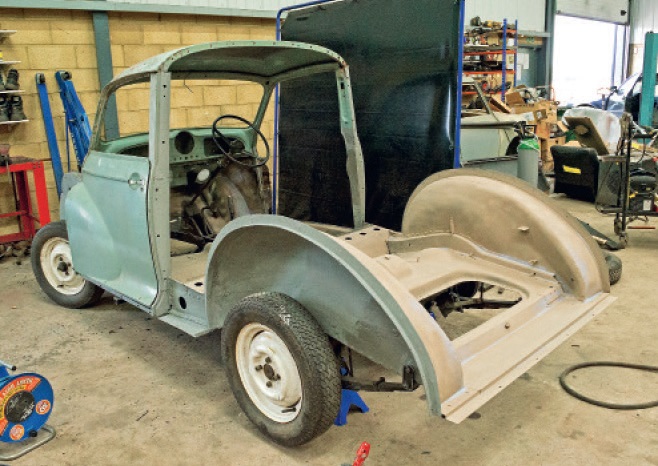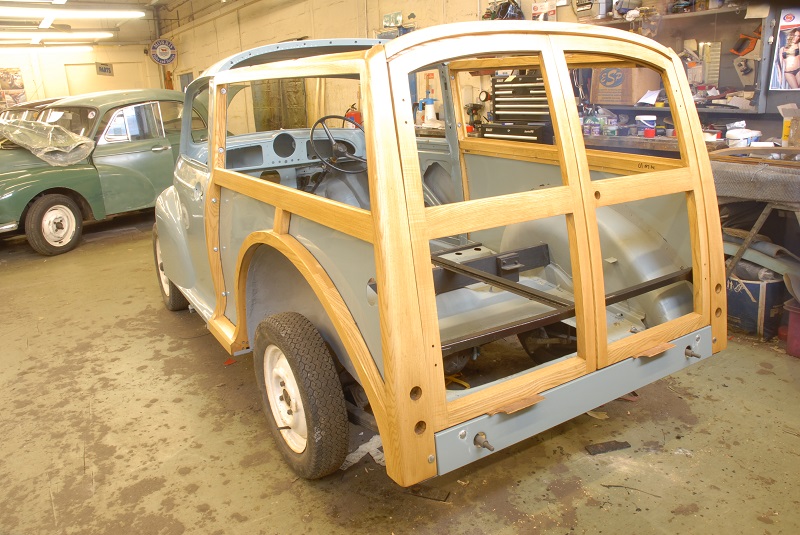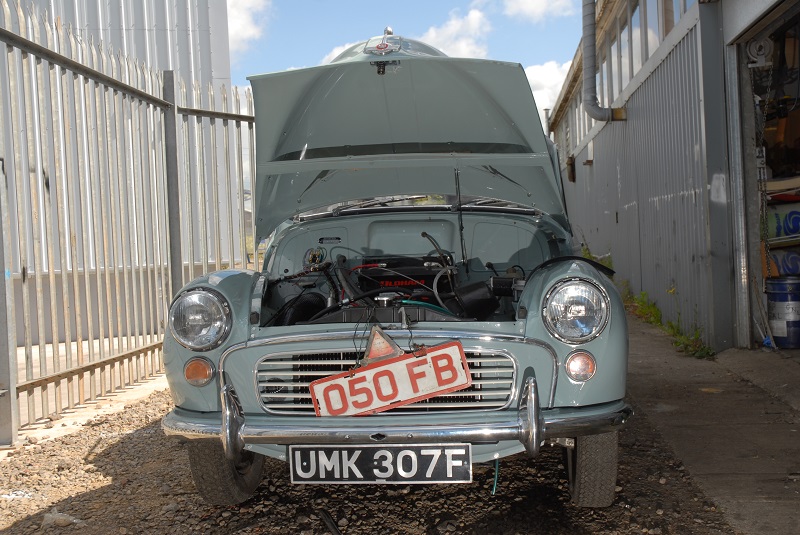A Morris Traveller’s Journey to the Perfect Restoration
British style guru Vidal Sassoon once said: “The only place where success comes before work is in a dictionary.”
So it is with a proper restoration job.
We recently gave away the competition prize of a painstakingly restored 1968 Morris Minor Traveller De-Luxe.
This was in conjunction with Classics Monthly magazine at the NEC Classic Motor Show.
The 21-month project has given wannabe restorers an insight into how demanding and ultimately rewarding such an undertaking can be.
Every long journey must start with one single step. In this case that step was in February 2014 at the NEC Birmingham... 
Uncovering a can of worms
The contest was launched at the NEC Classic Motor Show with a strip-down of the car in front of a live audience.
This saw engine ancillaries, wings and the interior completely removed. Next it was the roof panel and back bodywork.
This, and other work, revealed the daunting extent of the task ahead:
- The ash framework was found to be a DIY job... and not the greatest at that.
- Next out were the gearbox and engine. The former seemed saveable, but the latter had to be taken apart ready for machining.
- A fresh wood frame arrived and was test-installed. More bad news. More bodged work was revealed. The Traveller’s steel interior wheel arches were not in alignment.
Brave new weld
The project then seemed like painting the Forth Bridge with an apparent domino effect at every turn.
The wheel arch job unearthed the need for some serious welding on the back spring hanger.
Simultaneously, the engine bay was shot-blasted to naked metal. And rear welding became increasingly intensive because further plated repair jobs were uncovered. Meanwhile, the spring hanger and rear arch work continued apace.
A fresh wood frame was also constructed.
Good news at last. The alignment of the bodywork and chassis seemed fine.
Sill welding, B-pillar repairs plus front cross-member and chassis leg work were undertaken to right previous poor repairs.
The decaying B and A-pillars presented fresh challenges. Extra-special care was needed after welding and cutting to make sure that every single nut and bracket were precisely where they should be. 
Painting a brighter picture
The Traveller was rolled on its side for further welding on its floor pan A-pillar and sill.
Job done, this marked the final bodywork repair, leaving it ready to be primed for paintwork.
They say out of sight, out of mind. But the restorers knew that these are the areas which rot most. Cue a zinc-heavy primer.
Door panel welding meant the door skins wouldn’t have to be replaced, so that was one job less to worry about.
The Traveller returned from the painters. Now it was really taking shape.
Individual panels were wrapped to ferry to Bristol-based Charles Ware's Morris Minor Centre.
Ware prepared the fresh wooden frame. Sikkens Cetol sealed the wood and safeguarded it from the worst that UV light can throw at it.
The homeward straight
Our restorers had suffered the consequences of others not aligning bits and pieces properly.
That was why - after the wooden frame was back on the car - the roof was nailed into position with Swiss watch precision.
Further bodywork fretting was now required for better alignment after outer panel trail installation. 
Next came the engine, which benefitted from:
- Newly machined block and head
- Fresh Piper camshaft
- New pistons
Next, work was started on the inside trimming.
Then came the carpets, door cards and back load lining. Voila! It was mission accomplished... well, almost.
First, there was the potentially nerve-wracking test drive, its first voyage for goodness-knows how many years.
The drive was smooth and successful. Now all that was left was for Classic Monthly’s editor-in-chief to collect the car from Ware to deliver to lucky winner, Kirsty Thorp.
Potted history of the Morris Minor
- 1948: The world gets its first taste of Morris Minor mania at London’s Earls Court Motor Show. Mini creator Alec Issigonis designs it and William Morris builds it. British Motor Corporation and British Leyland become future builders. A trio of series follow: the MM (1948), the Series II (1952) and the 1000 series (1956)
- 1952-54: The Traveller, part of the Series II project, is developed and on the road. This wood-framed estate goes on to become one of the darling staples of Britain’s roads
- 1971: The last Morris Minor is built. An estimated 1.6 million-plus models have rolled off the production lines
- 2015: Moggies excite as much passion and interest as they ever have with their simplicity, eccentricity and durability. A Morris Minor with only 190 miles on the clock that had not been on the road since 1968 fetches £17,000 at auction. The Morris Minor Owners Club (MMOC) boasts more than 14,000 members worldwide and has 50-plus branches UK-wide

COMMENT